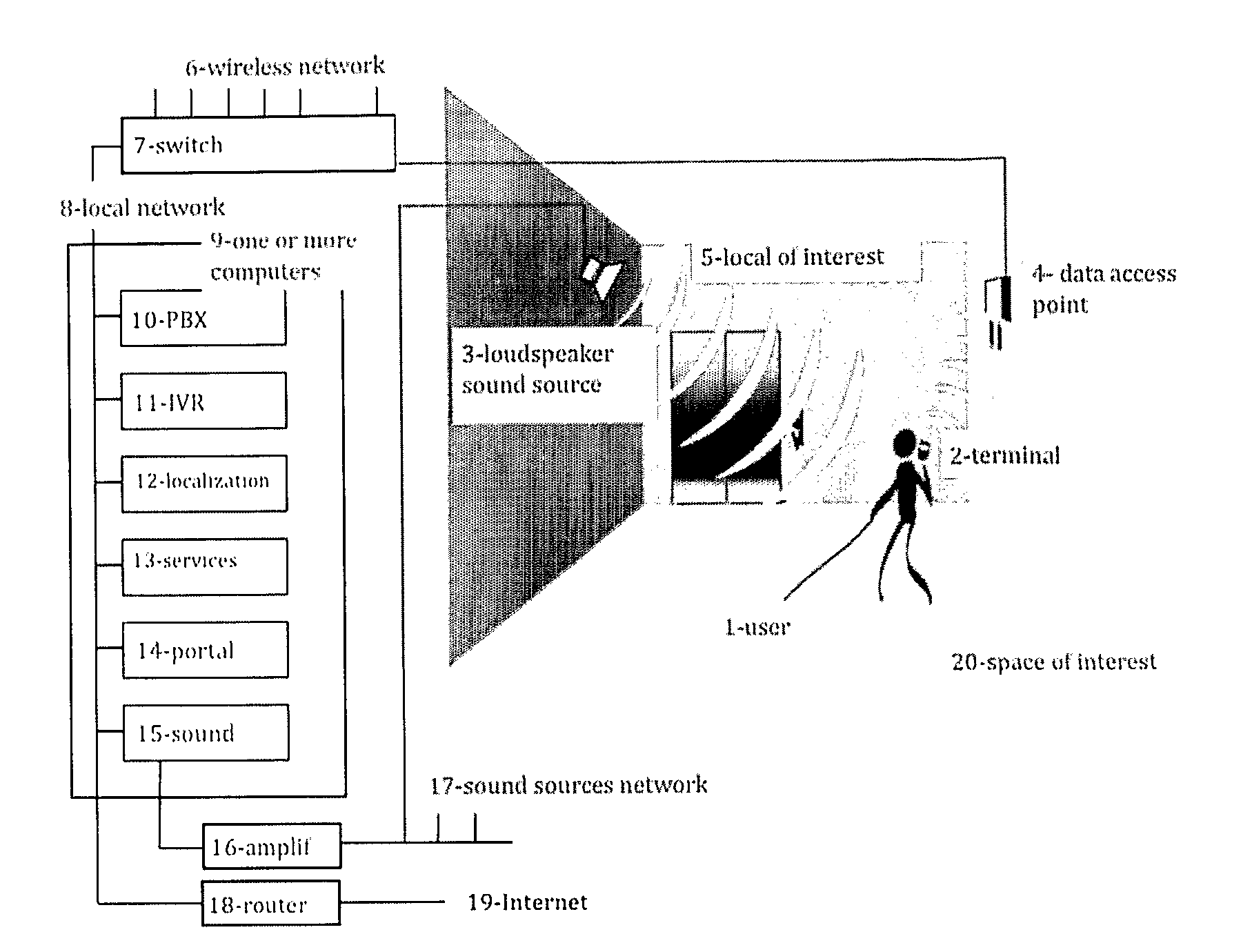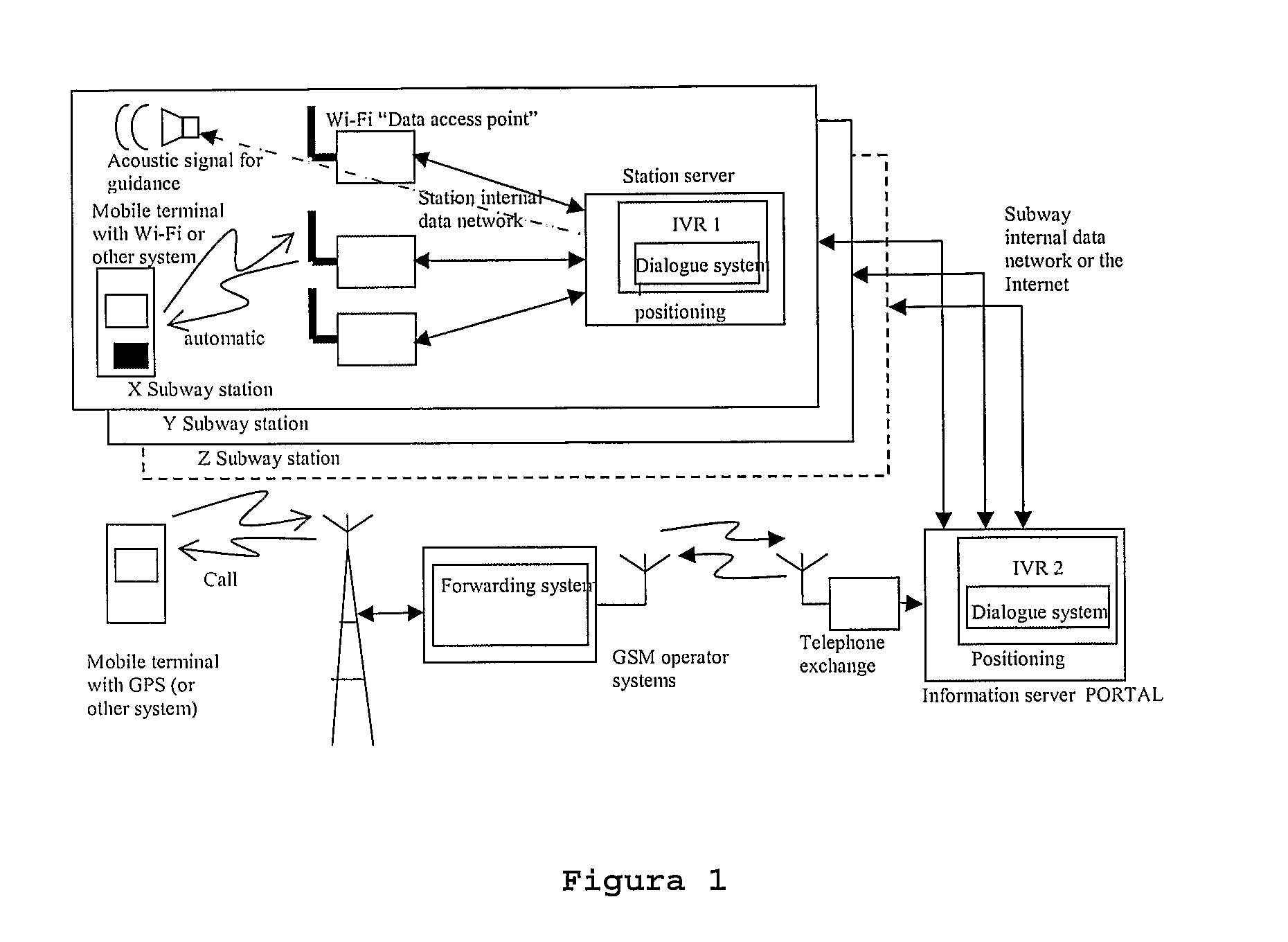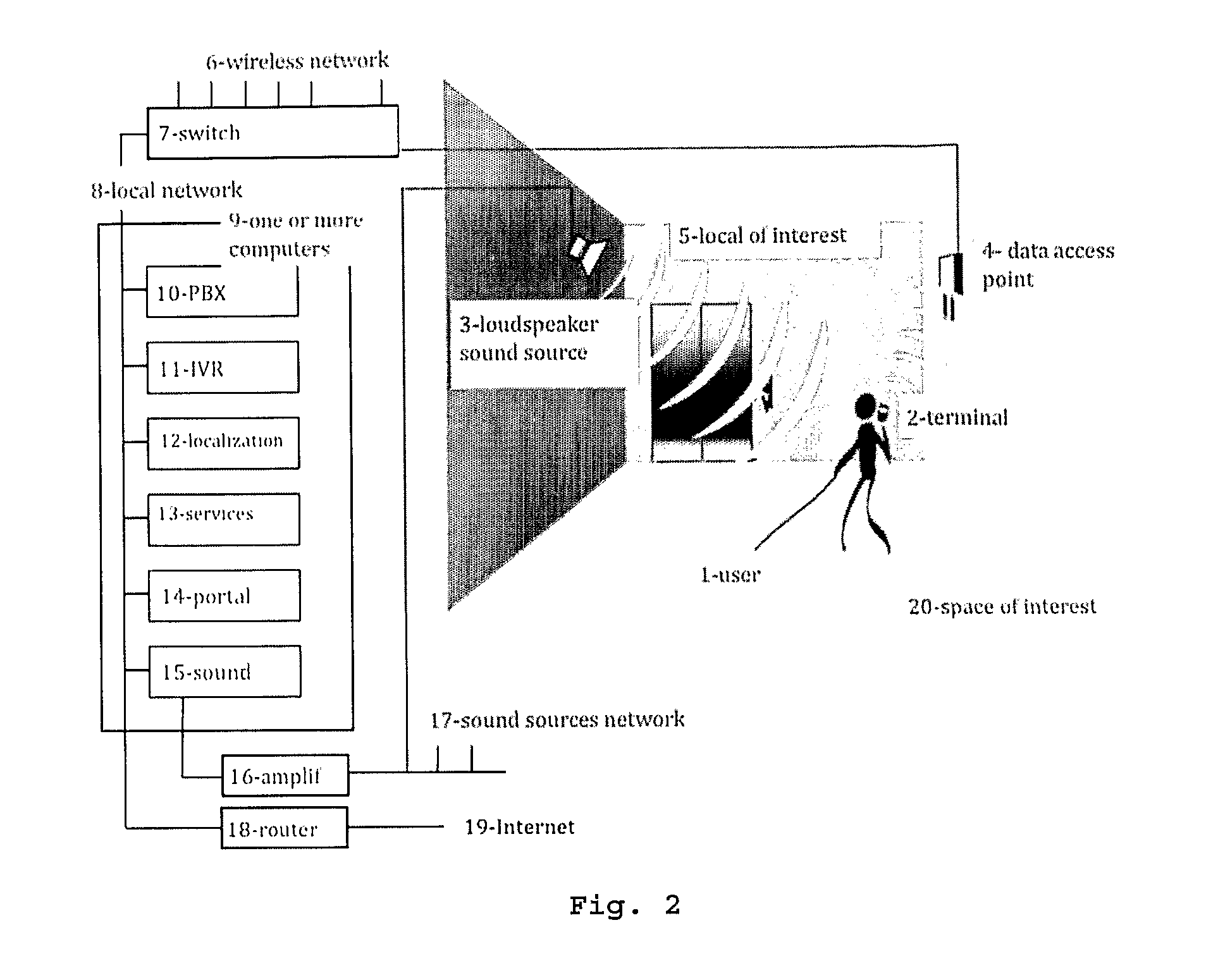Guidance, navigation and information system especially adapted for blind or partially sighted people
- Summary
- Abstract
- Description
- Claims
- Application Information
AI Technical Summary
Benefits of technology
Problems solved by technology
Method used
Image
Examples
example of implementation
[0051]We describe hereinafter, with the aid of FIG. 2, a specific application example of this invention. We can observe in the space of interest (20) the existence of a local of interest (5), in this example an elevator door that the user (1) is trying to reach. In the space of interest (20) we can see a wireless network (6) structured through a switch (7), that groups one or more data access points (4). This wireless network can be used to audio communication or DTMF controlled by a PBX (10), between the terminal (2) of the user (1) and the system, implemented in one or more computers (9), organized on a local network (8). Alternatively, the audio communication can be performed by another telephone wireless channel, private or public. The system allows to obtain the terminal localization (2) of the user (1) through the wireless network, eventually in an articulated way with the audio communication managed by the IVR module—Interactive Voice Response—(11), in combination with a trac...
PUM
 Login to View More
Login to View More Abstract
Description
Claims
Application Information
 Login to View More
Login to View More - R&D
- Intellectual Property
- Life Sciences
- Materials
- Tech Scout
- Unparalleled Data Quality
- Higher Quality Content
- 60% Fewer Hallucinations
Browse by: Latest US Patents, China's latest patents, Technical Efficacy Thesaurus, Application Domain, Technology Topic, Popular Technical Reports.
© 2025 PatSnap. All rights reserved.Legal|Privacy policy|Modern Slavery Act Transparency Statement|Sitemap|About US| Contact US: help@patsnap.com



